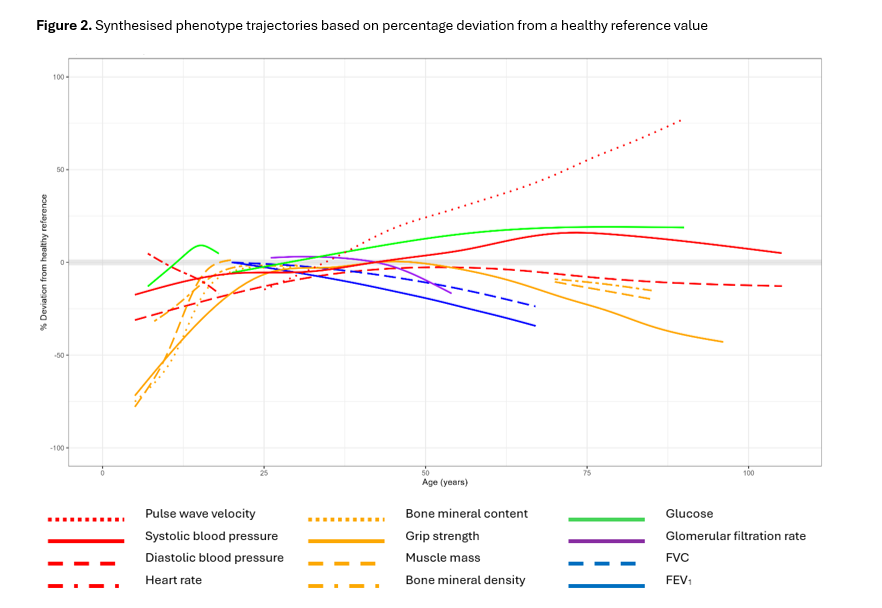Public Health & Prevention 3
Session: Public Health & Prevention 3
786 - A novel synthesis of whole-of-life trajectories of phenotypes underlying non-communicable diseases (NCDs): Opportunities to identify prevention windows
Monday, April 28, 2025
7:00am - 9:15am HST
Publication Number: 786.3952
Katie McBain, Murdoch Children's Research Institute, Parkville, Victoria, Australia; Ryan Taylor, University of Melbourne, Melbourne, Victoria, Australia; Dorothea Dumuid, University of South Australia, Ironbank, South Australia, Australia; Susan Clifford, Murdoch Children's Research Institute, Parkville, Victoria, Australia; Melissa Wake, Murdoch Children’s Research Institute, Parkville, Victoria, Australia
- KM
Katie McBain (she/her/hers)
PhD candidate
Murdoch Children's Research Institute
Parkville, Victoria, Australia
Presenting Author(s)
Background: Most non-communicable diseases (NCDs) represent the endpoints of lifecourse trajectories across their relevant body systems. Trajectories for single phenotypes underpinning separate NCDs are emerging from cohort studies, but these typically only partially track the life course. Synthesising available evidence could guide optimal, coordinated timing for interventions aimed at preventing NCDs.
Objective: To (1) quantitatively synthesise trajectories of multiple NCD-relevant phenotypes and (2) identify gaps in evidence.
Design/Methods: On 17th September 2024, we searched PubMed and Medline for papers reporting longitudinal phenotype trajectories that underpin ten NCDs contributing overwhelmingly to global burden of disease in adults aged 75+. We included trajectories with ≥3 timepoints, spanning ≥5 years (children) or ≥10 years (adults). We developed a novel method using the ggplot2 package in R to synthesise trajectories from different studies and spanning different age ranges. We synthesised trajectories based on their standard measurement values and based on a percentage deviation away from a healthy reference value. This allowed us to quantify their lifecourse values both in absolute terms and relative to each other.
Results: We screened 3766 abstracts and reviewed 287 full texts, resulting in 36 papers that underwent data extraction. 48% reported cardiovascular trajectories, which collectively span nearly the entire lifecourse (age 5–100). 23% reported cognition trajectories, but construct diversity precluded synthesis. The remaining 29% reported trajectories of lung function, glucose, kidney function and musculoskeletal phenotypes. None reported trajectories of vision or hearing. Figure 1 shows the synthesised trajectory patterns for individual phenotypes. After synthesising, life course trajectory patterns emerged for glucose, musculoskeletal and most cardiovascular phenotypes. Trajectory shapes of lung and kidney function were less distinct, with notable evidence gaps in both early and later life. Figure 2 shows the synthesised trajectories relative to each other. Most phenotype trajectories reach their optimum during early adulthood, highlighting the importance of childhood for prevention of these NCDs.
Conclusion(s): Evidence is strongest for trajectories underlying cardiovascular disease, diabetes and the adverse impacts of falls, and identifies life stages when preventive interventions may be most impactful. Trajectories leading to other high-burden NCDs are understudied, particularly in childhood. More evidence is required to guide prioritisation and optimise timing of interventions.
Academic Statement.pdf
Figure 2. Synthesised phenotype trajectories based on percentage deviation from a healthy reference value


